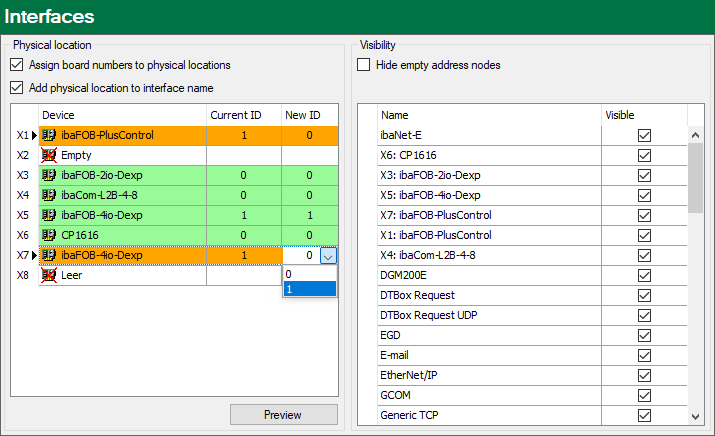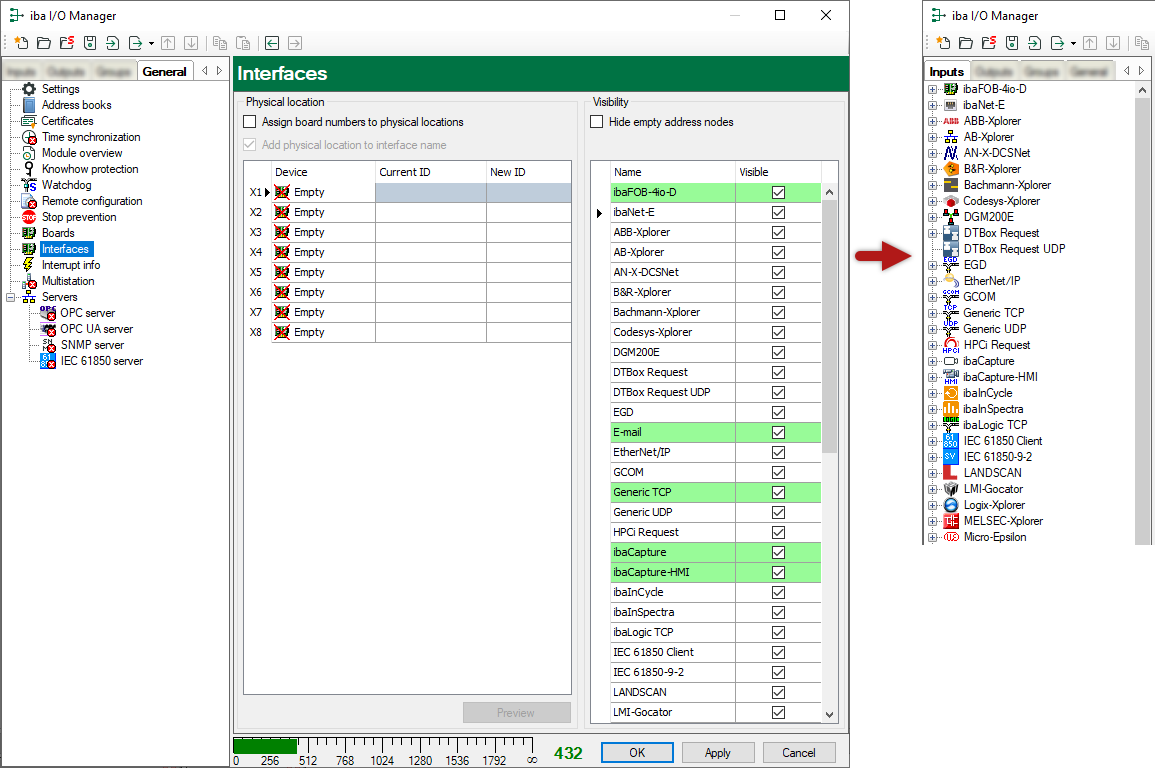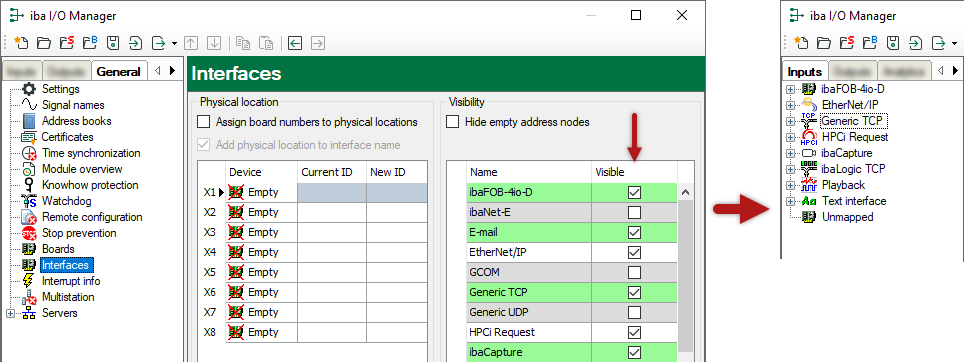The Interfaces node performs two functions:
-
Assignment of the physical location of boards and their IDs
-
Control of the visibility of the interfaces in the I/O tree
Physical location
Both a bus and a slot number are automatically assigned by the BIOS of the computer to the plug-in boards in a PC. Based on this information, ibaPDA assigns an ID to each iba board. This ID is shown in the 7-segment display of the board. Since a maximum of 8 boards can be inserted into one PC per board type (e.g. ibaFOB-D/-Dexp or ibaFOB-TDC) , IDs from 0 to 7 are assigned for each board type. The sort order of the boards in the interface tree in the I/O Manager is carried out automatically in ascending order according to the ID. However, this order does not necessarily match the physical order or arrangement of the cards in the computer. So it might also occur that the inserted board in the first slot has a higher ID than the board in the second slot.
If you want the order of the boards in the I/O Manager to match their physical order in the slots then you can make this correction in the "Physical location" table.
Note that this function is only available for certain motherboards, which are supported by ibaPDA and used in the ibaRackline and ibaDeskline computers:
-
Avalue EAX-C246P
-
Protech BA-0951
-
SuperMicro C2SBC-Q
-
SuperMicro X10SAT
-
SuperMicro X11SPL-F
The table in the "Physical location" area shows the detected boards in slots X1 … with their current ID.

If you want to change an ID, click in the New ID column and select the desired ID number.
Note that the IDs per board type must always be unique (no duplicate IDs).
Boards with altered ID are marked in orange in the table.
Pressing the <Preview> button makes the new ID number flash in the 7-segment display of the board. You can therefore check whether the assignment is correct before you confirm the new configuration with <OK>.
If you have already configured the modules and signals for a board, the modules do not migrate with the ID! You must therefore be sure that the modules are assigned to the correct boards (connectors). If not, you must manually move the modules in the I/O Manager.
ibaPDA ensures that a board's ID is retained if more boards are added.
However, if one of multiple boards of the same type is removed, the ID may be changed automatically.
If you, e.g., have installed 3 ibaFOB-D boards and the board with ID 1 is removed then the board with ID 2 automatically receives the ID 1 since there cannot be any gaps in the ID numbering.
Assign board numbers to physical locations
If this option is enabled, the board IDs are assigned according to the slot order. Recognized boards are highlighted in green in the table.
If ibaPDA is being installed on an ibaRackline or ibaDeskline computer for the first time, then the option is enabled by default. In all other cases, it is disabled.
Add physical location to interface name
If this option and the option Assign board numbers to physical locations are enabled, then the card names in ibaPDA receive a prefix with the physical location.

Visibility
The table Visibility lists all the interfaces that are available either through licenses or installed cards. These interfaces can also be viewed in the interface tree.
You can hide or display the interfaces not required in the interface tree by using the checkbox in the Visible column.
Interfaces with configured modules are highlighted in green and cannot be hidden.
If you double-click on an interface in the table, you will jump directly to this interface in the signal tree in the I/O Manager.
All interfaces visible:

Selected interfaces are visible, the others are hidden:
